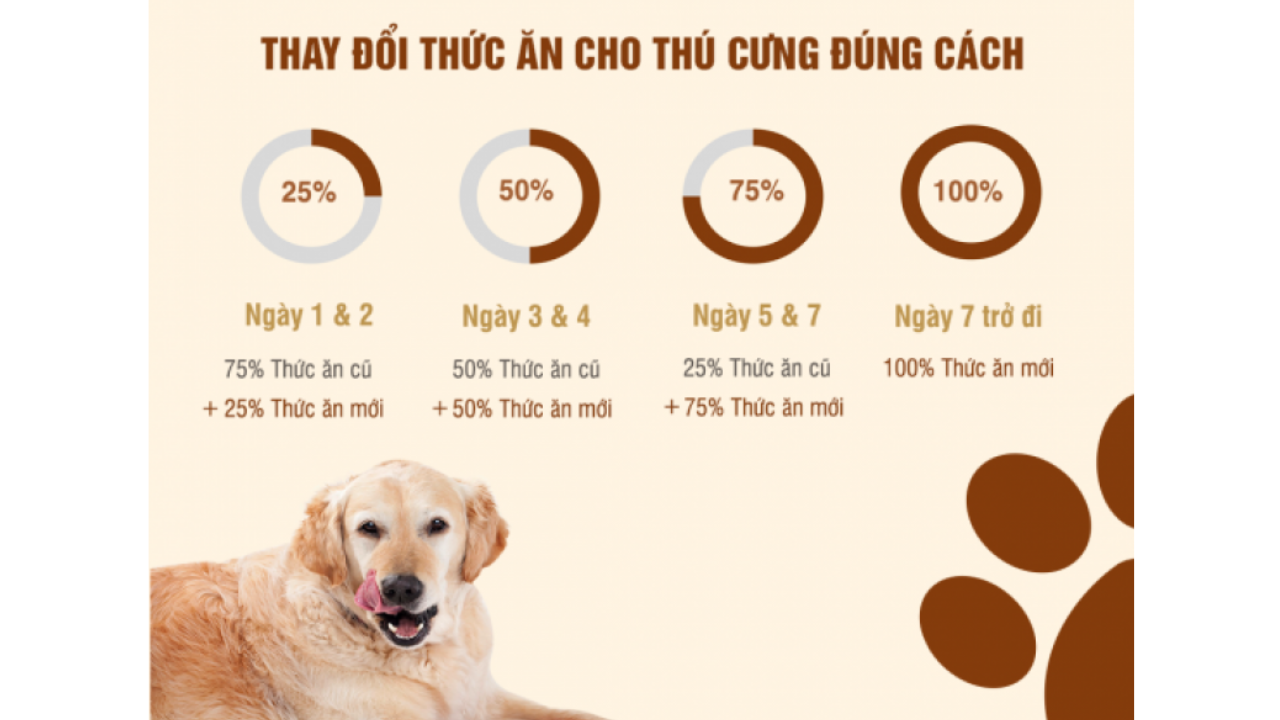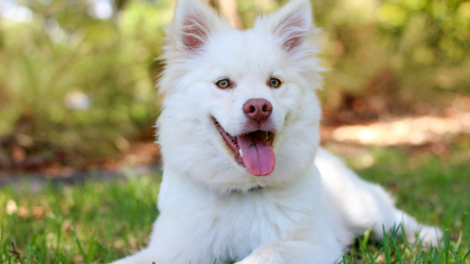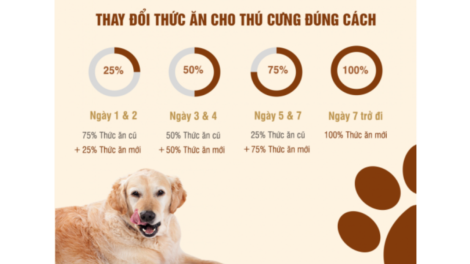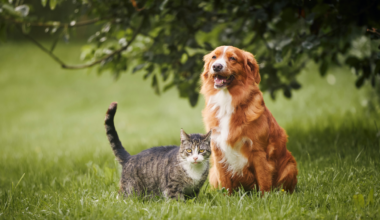- You have no items in your shopping cart
- Subtotal: 0 ₫

In fact, there are quite a few reasons for pet owners to start changing their dog food. These could be:
- Changes to match the nutritional needs of the dog s age
- Changing the type of food to help dogs absorb more nutrients
- Changing the type of food that supports the treatment of dogs
- Mandatory feed change by the old feed producer discontinuing production.
The question is: Does changing food cause problems for dogs?

Problems with changing food, forcing dogs to get used to new food suddenly
An adverse food reaction is a term that describes food-related reactions or diseases in dogs such as allergies, food intolerance or other gastrointestinal diseases. However, you need to understand that allergies actually come from a specific reaction of the immune system and must be correctly diagnosed by a doctor in order to know what a reaction to a food component is.

According to the American Kennel Club, when changing food or getting a dog to introduce a new food suddenly there may be the following reactions.
The first is gastrointestinal symptoms such as vomiting, nausea, diarrhea or changes in appetite, specifically:
- The risk of diarrhea
Usually when changing new food, some dogs will experience vomiting or diarrhea. It is due to the change in pH in the old and new food. If this condition persists (over a week) without timely detection and support, it can lead to other consequences such as exhaustion, reduced resistance and vulnerability to minor illnesses later on.
- Dogs are anorexic, more picky eaters
With some sensitive dogs, if the change of food or make the dog get used to new food too suddenly, the dog will have the opposite reaction is picky eating, loss of appetite and stop eating. However, if this picky eating only takes a short time (4-5 days), it is not too worrying for the owner. Keep going and persist in changing food but stick to the principle of change that is suitable for dogs. Because dogs are like humans, things that change so suddenly are easy to scare and take precautions.
Next are symptoms that appear on the skin or a combination of both.
- Allergy symptoms appear on the skin: the dog has itching, skin inflammation, excessive hair loss or various rashes. So if such symptoms occur, take it to the vet for examination and evaluation of the dog’s condition.
4 simple steps to help your dog get used to new foods
To prevent your pet from experiencing gastrointestinal problems when feeding your dog new food, the 7-day rule should be followed closely:
4 simple steps to help your dog get used to new foods
Step 1: Mix old and new foods in a ratio of 75-25

- To avoid the problems when changing the dog food mentioned above, give your dog new food in small amounts. Specifically, you need to combine old food and new food in proportion: 75% of the intake is old food and 25% is new food that needs your dog to get used to. This is the first step for dogs to begin to get used to and adapt to the taste, nutritional components as well as enjoy new foods.
- Duration: 02 days (day 1 + day 2)
- This is the time when you need to monitor and observe the reactions of the dog. How does the dog react when eating new food, does it go outside normally, does it drink water and move normally or anything changes? Pay special attention to the condition of the dog going outside during this time.
Step 2: The old-new food ratio is 50-50
- After 2 days of getting used to the new food, getting used to the new taste and nutrition and observing that the dog does not have abnormal manifestations, increase the amount of new food to balance with the amount of old food. The ratio of old food to new food can be 50% – 50%.
- Duration: 02 days (3 days + 4 days)
- Similar to days 1 and 2, it is important to pay attention to the dog’s behavior with new food in terms of movement, appetite or not, and especially whether the dog’s condition is abnormal or not.
Step 3: Increase the ratio of old to new foods to 25-75
- Duration: 02 days (5 days + 6 days)
- After 4 days of getting used to the new food, if the dog has completely normal expressions (especially digestion), continue to reduce the proportion of old food – increase the proportion of new food to 25% – 75% so that the dog can feel more about the taste, adapt to the new food.
- Keep observing your dog s reactions to new food. Ideally, feed your dog when you are at home and be able to monitor your dog as soon as he is eating.
Step 4: Feed the dog completely new food
After 6 days of getting used to the new food, at this time the dog is almost completely adapted to the digestion and taste of this strange food. You can feed the dog 100% new food and cut out the old food.
The introduction of new food to dogs in the 07-day method will help minimize digestive disorders, diarrhea or picky eating, anorexia of dogs later. Here are 4 simple steps to change dog food for your reference. Please follow our website to update the latest information on how to choose the right food and how to care for your pet is always healthy, less sick.




